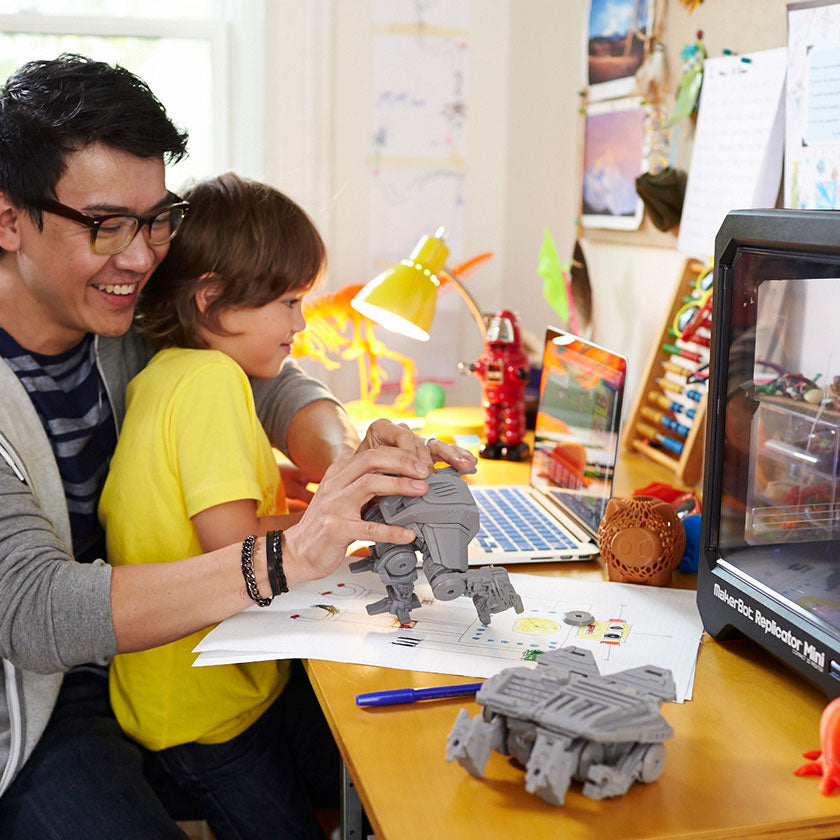Your Cart is Empty
We gladly accept school purchase orders!


In his new National Curriculum for schools in England, announced this week, Education Secretary Michael Gove pledged to modernise design and technology education. This is thought to include introducing 3D printers into schools to help the next generation of children become creators rather than users.
Gove’s plan, together with the news yesterday that high-street retailer Maplin will be the first to sell 3D printers to the public for just under £700, reaffirms once again that this technology is on its way to being embraced by the general public.
The government is to be applauded for wanting to adopt a new technology like 3D printing in schools. The next generation of engineers, scientists and manufacturers will need to be highly skilled in computing, coding and equipped with technical knowledge to work with this kind of technology. It is an exciting thought that children will learn from an early age how to produce almost anything they like with the use of a 3D printer. Even at this early stage, 3D printers have already been used in the medical, transport, toy and hobby and food industries, amongst others, to great effect.
At the same time, this is yet another example of technology marching forward ahead of policy and legislation. It is equally important to introduce students to the regulation of 3D printing as it is to give them the equipment they need to carry it out.
The controversy over the 3D printing of a gun this year led to questions about the need for regulation. The US government responded in the only way it knew how by seizing the blueprints to the weapon and claiming control of the files containing them. However it was too late to stop the information being shared across the internet. The case taught us that when it comes to regulating this technology, we are in uncharted territory. The need for a structured policy framework is becoming ever more pressing. This was demonstrated to dramatic effect last week when journalists managed to smuggle a 3D printed gun past security and into the Israeli Parliament.
It is not just the extreme cases of 3D printed guns that need to be thought about; students should also be educated to some extent on the protection and exploitation of 3D printed products. Undoubtedly, getting children interested in these issues will be a challenge but it is a challenge that needs to be addressed.
Regulation can be in the form of legislation; however students could also be encouraged to think about new business models in dealing with this technology. We probably do not need to worry about ten year olds producing 3D printed weapons but they may be keen to print out a new toy in the model of another they have seen in the shops.

The force is strong with them. Watch out had better Toys R Us. Creative Tools
Learning lessons from the past and from the challenges faced by the entertainment industry, should, in theory, assist us in dealing with emerging technologies. More than a decade ago, Napster opened up the doors to a new world of file-sharing which was immediately dealt with through litigation. This has been the trend ever since. Similar to what took place during the Napster revolution, the recent surge in 3D printing sites such as Thingiverse, have the potential to enable or at least encourage users to infringe products protected by intellectual property laws.
In 2011, Games Workshop a British game production company served a notice and takedown order on Thingiverse under the US Digital Millennium Copyright Act 1998. This was in response to users producing models similar to those sold in Games Workshops. Although the dispute took place in the USA and was settled out of court, it is a prime example of the issues that need to be tackled if 3D printing continues its meteoric rise.
It is therefore important that whilst adopting this technology, the future generation is also educated and made aware of the regulatory and legislative challenges which come with new technologies. There are also other areas relating to 3D printing that need a more structured policy framework. If, for example 3D printing becomes “standard” in schools, we will also need to develop standards for the technology, including parts, processes and safety.
We should not dampen Gove’s enthusiasm for exciting new technologies, but it is imperative to think ahead before our children outsmart us again.
source: http://theconversation.com
Ayu
March 15, 2015
09 Jan 13, 2013 1:01 pm Errol Alegre After looking at your wteisbe i really like this dog food packaging. You’re great with your simple designs and internet marketing.